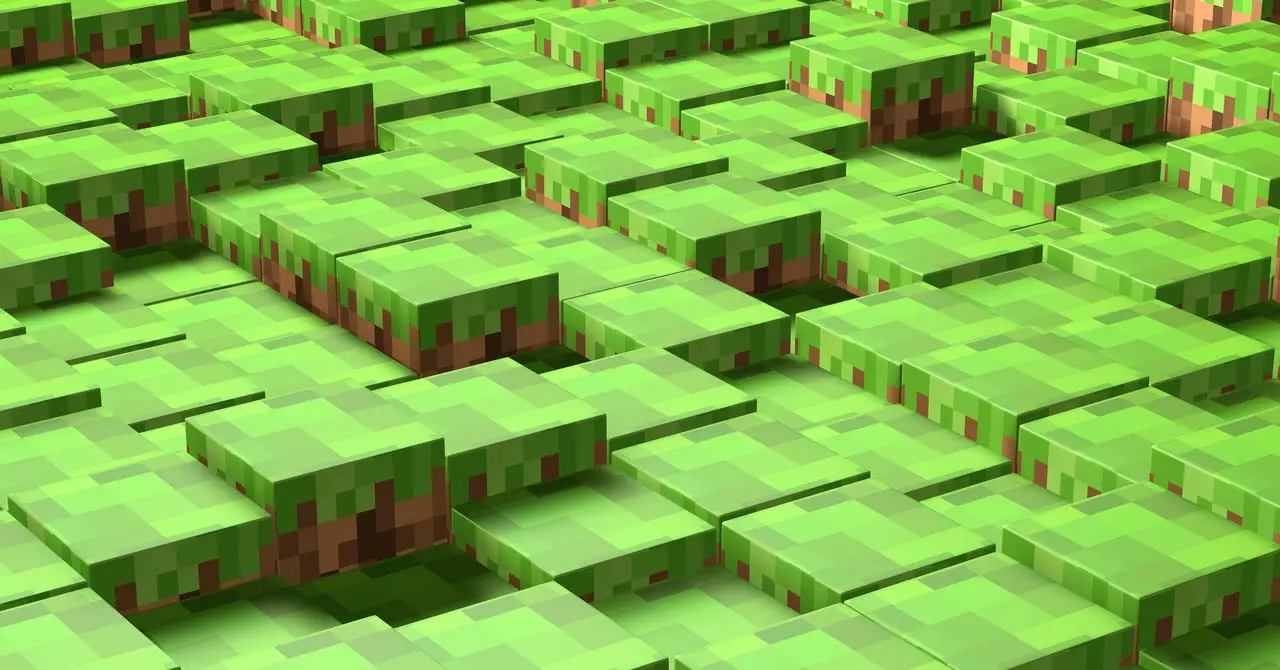For more than a decade, Minecraft has captivated players with its iconic blend of creativity and exploration. Its simple yet profound mechanics create a sandbox environment that has encouraged endless adventures, allowing users to sculpt their worlds with limitless possibilities. This phenomenon continues to influence many gaming landscapes, inspiring countless clones and spin-offs that strive to capture its magic. One of the most recent developments in this endeavor is Oasis, a peculiar game that innovatively harnesses artificial intelligence to generate its universe.
Launched recently by the Israeli startup Decart in conjunction with Etched, the game Oasis presents a unique twist on the classic Minecraft formula by employing an AI model designed to generate game content dynamically. Unlike traditional game engines that adhere to predefined parameters and rules, Oasis uses an AI system to conceptualize each frame based on player interactions. This ambitious project illustrates the potential of transformer-based AI models, akin to those that drive contemporary language processing AIs.
Oasis stands out not just for its eccentric approach but also for its ability to generate surreal visuals reminiscent of Minecraft while introducing a touch of unpredictability. The AI renders each scene based on previous frames and user input, yielding a constantly evolving landscape that challenges players to engage with it in novel ways.
Upon entering Oasis, players are immediately immersed in an intriguing world populated by bizarre elements, such as oddly shaped animals and erratically placed structures. The experience is strikingly reminiscent of dreamlike exploration, where boundaries between logic and fantasy blur. As gamers navigate the terrain, they might experience moments of uncanny dislocation, where a simple glance away could result in a complete transformation of their surroundings. This unique mechanic invites players to rethink their usual strategies associated with gaming; they cannot rely solely on static knowledge for decision-making since what they perceive can morph unexpectedly.
Players can also harness custom images as catalysts for generating unique landscapes. A simple photo upload, such as a beloved pet, transforms into a fantastical environment, further enhancing the personalized experience within the game. This feature seems to resonate with the online community, fueling curiosity as users explore the AI’s capacity for creative interpretation.
Within a brief period, Oasis has emerged as a viral sensation, with players experimenting with its AI framework to invent new experiences. Attempts to manipulate the AI and provoke unexpected environments reflect a broader cultural trend of engagement with generative AI in various realms, from art to gaming. Users are attempting to recreate favorite moments from Minecraft, seeking the thrill of discovering new worlds or ‘speedrunning’ their way through the unpredictability of Oasis.
Despite this exponentially growing interest, experts have expressed caution regarding the sustainability of Oasis as a traditional gaming experience. Julian Togelius, a professor specializing in computer science, points out the inconsistency inherent to generative AI, which often undermines its usage in standardized gameplay. He suggests the technology possesses the potential for future applications, particularly in controlling characters or orchestrating environments, but warns that the current implementation appears more like an exploratory concept than a well-rounded gaming solution.
Navigating the Uncanny Valley
Despite its innovative premise, Oasis finds itself at odds with many players’ desires for structure and predictability, a phenomenon Frank Lantz, a notable game designer, describes as existing within the “uncanny valley.” This term refers to the discomfort that arises when a creation feels almost familiar yet is distinctly altered in a way that disrupts immersion. While the surreal visuals and procedural generation intrigue users, the absence of an engaging experience has led to mixed feedback on whether the game provides the entertainment needed for sustained play.
Nevertheless, there is an unwavering excitement surrounding the promise of generative AI in gaming. With the right refinements and applications, innovators could indeed transform Oasis from a fascinating concept into a beloved game experience, leaving the door wide open for future exploration and developments in AI-powered gaming mechanisms.
The journey of Oasis serves as a microcosm of the broader conversation about artificial intelligence’s role in the gaming industry. As projects like this signal a shift toward more adaptive and surreal gaming experiences, the potential applications and implications of AI technology will continue to evolve. With ever-growing interest from developers and players alike, the intersection of AI and creativity promises to yield innovative developments that push the boundaries of what gaming can be, redefining not only how we play but also how we engage with digital worlds.


Leave a Reply